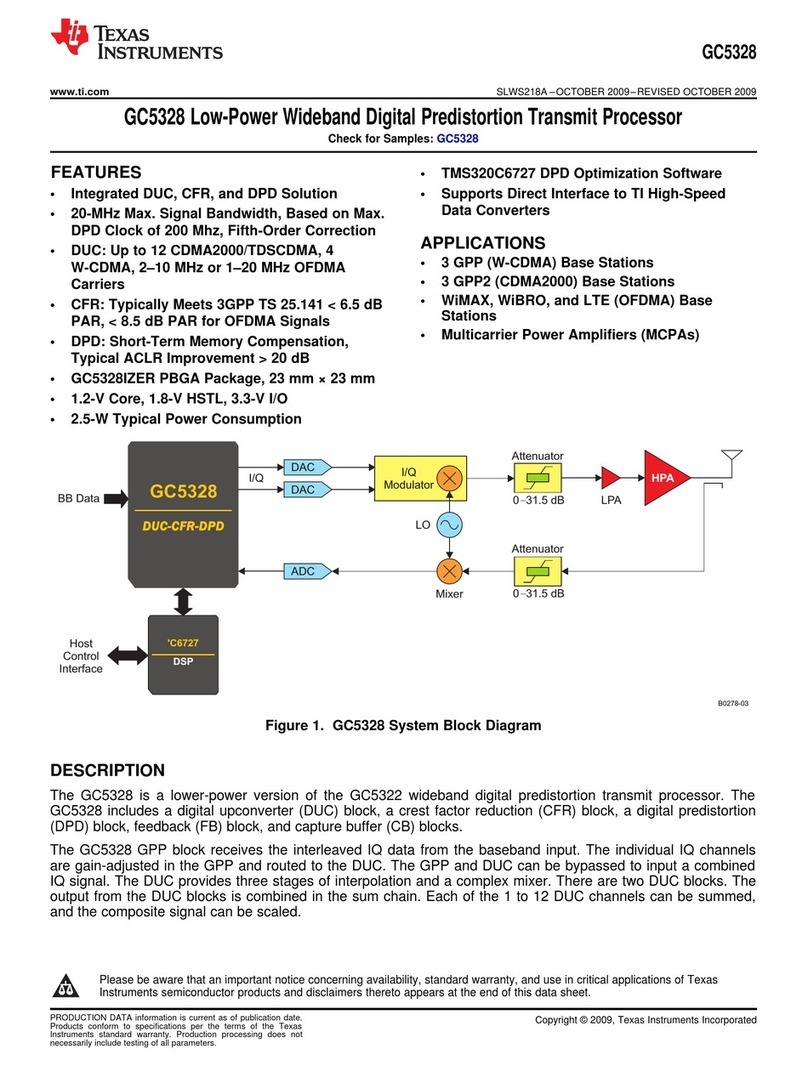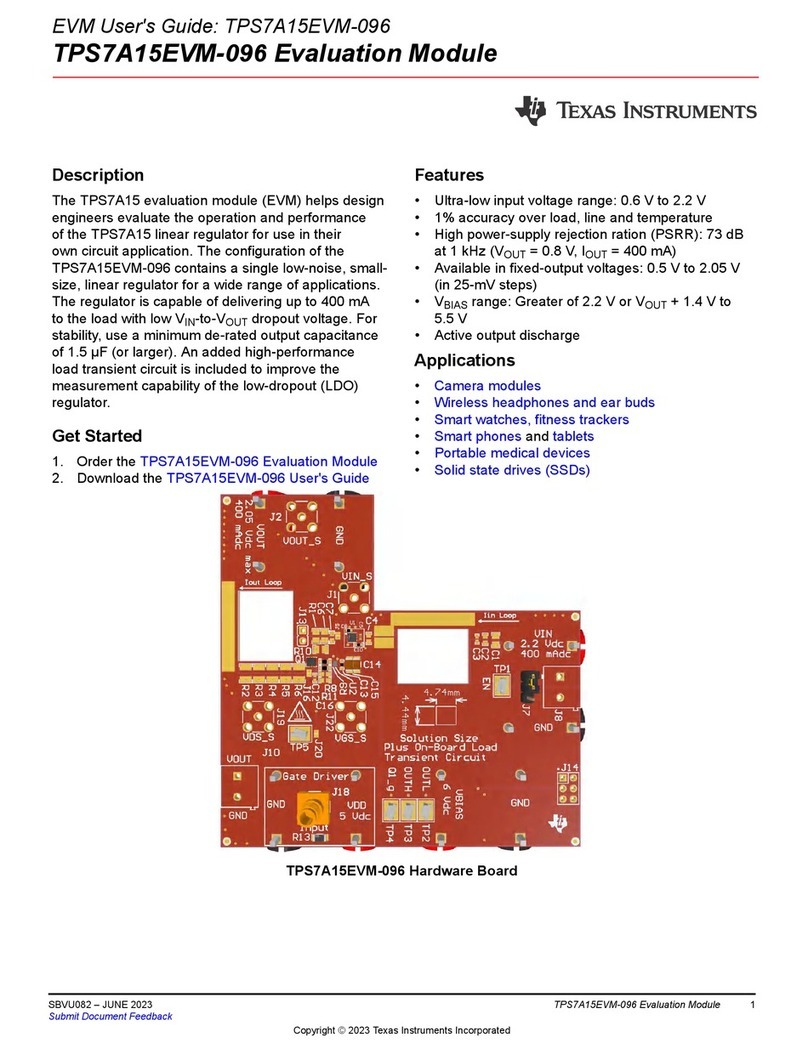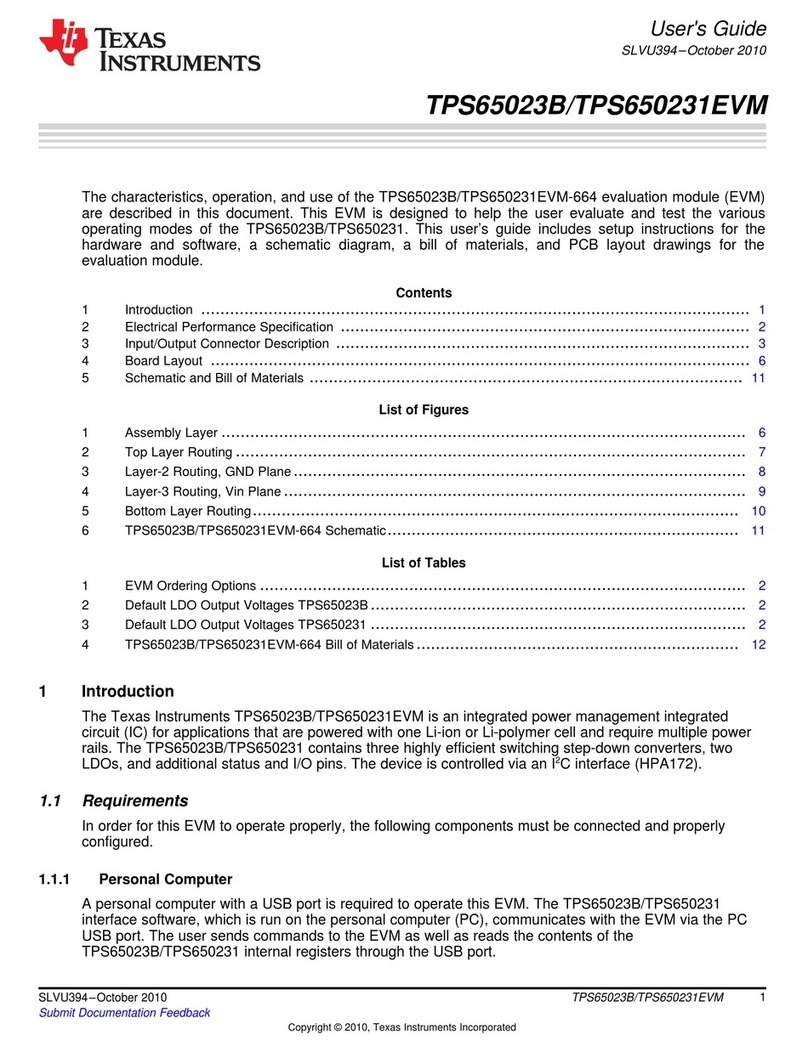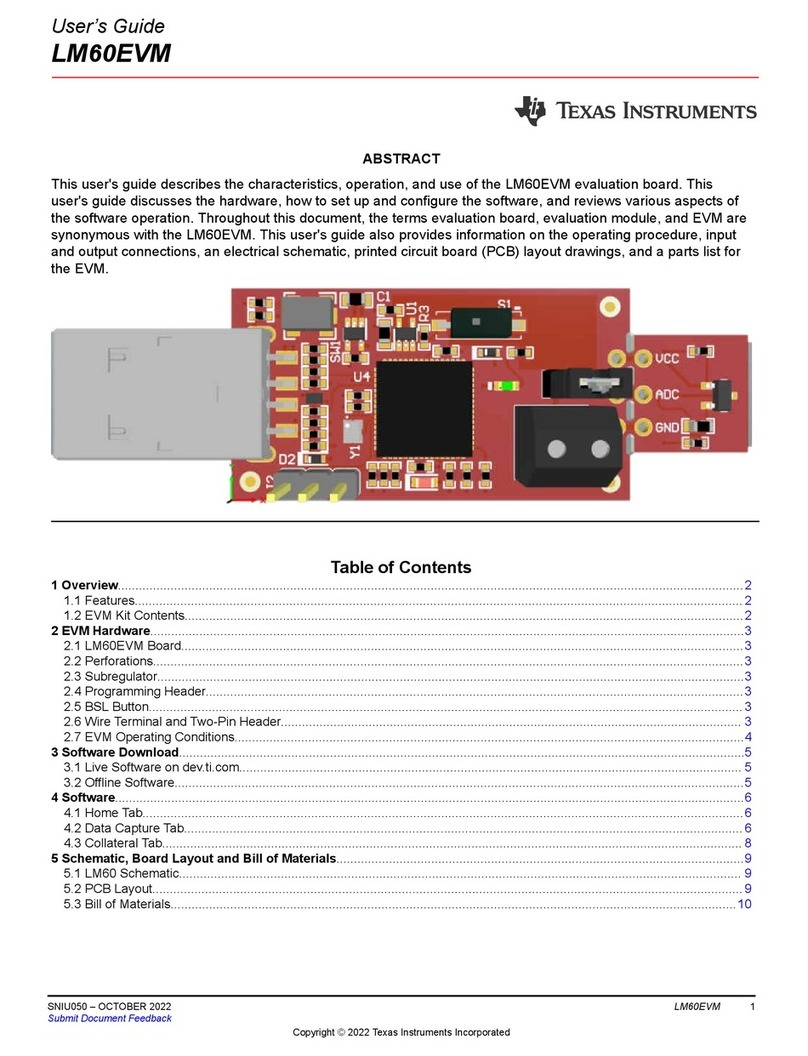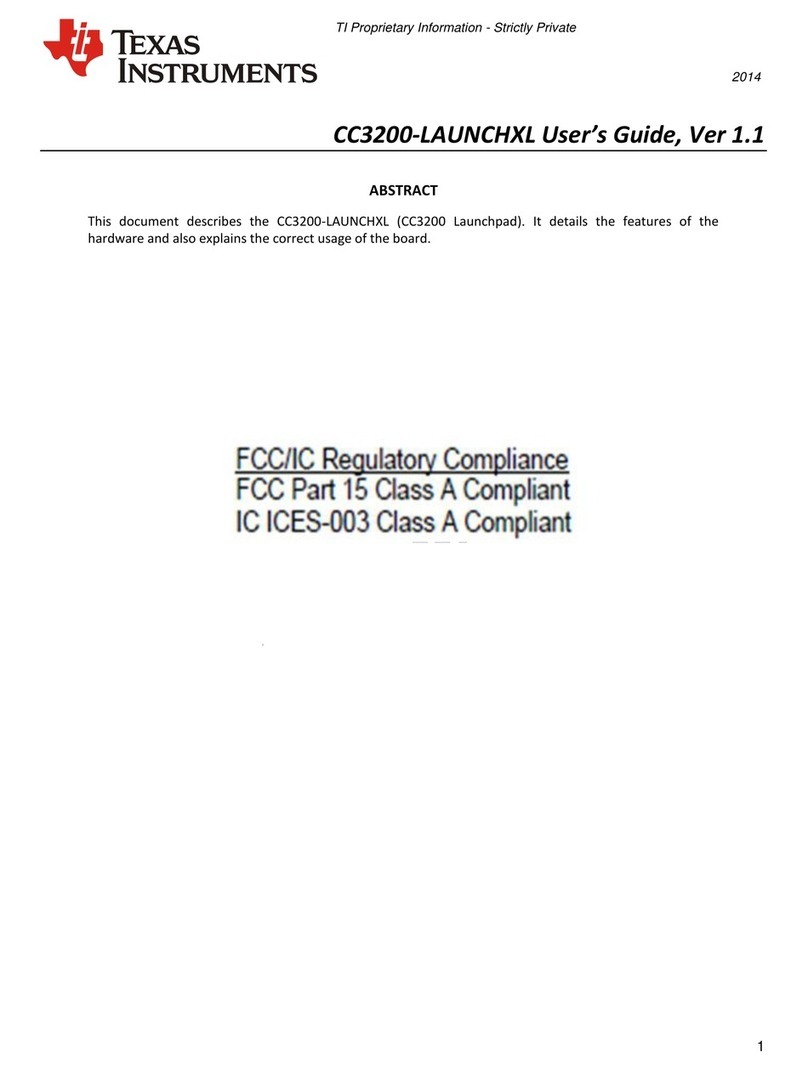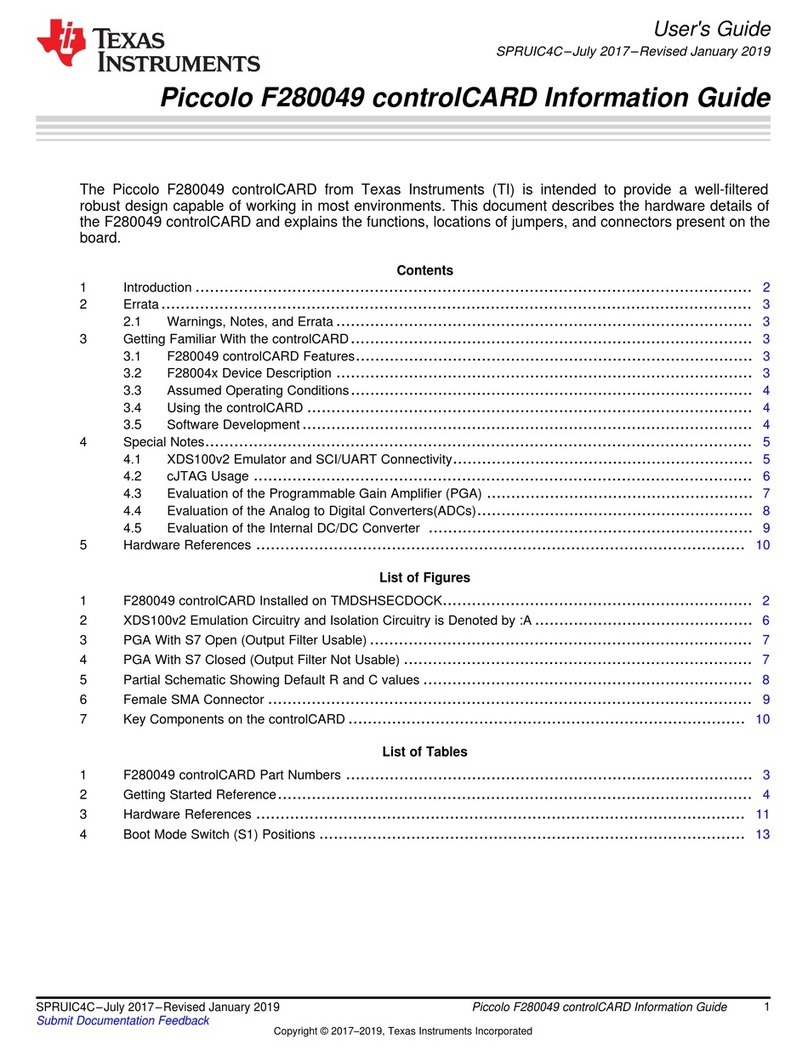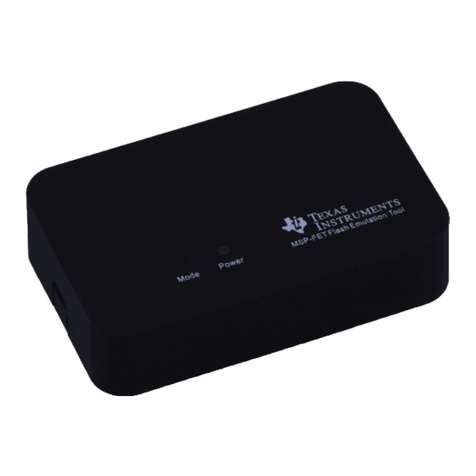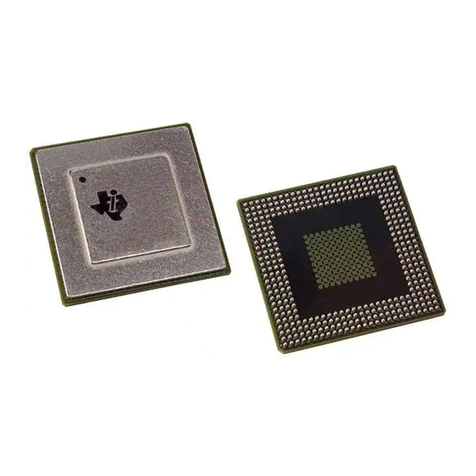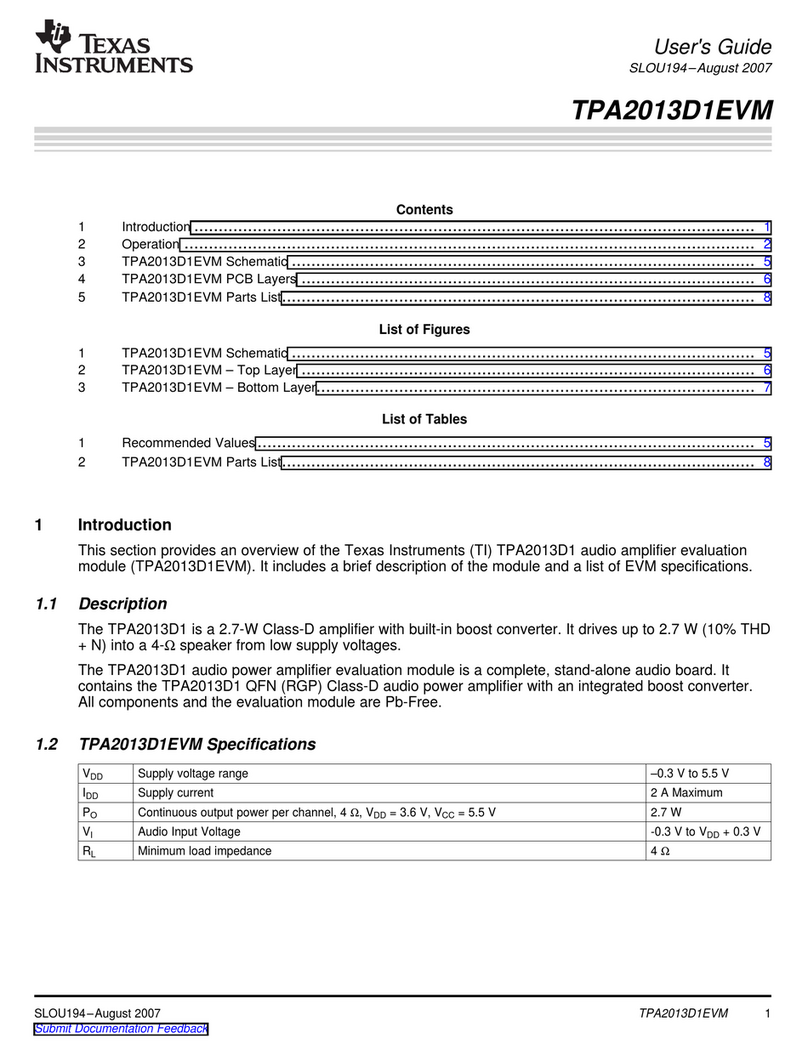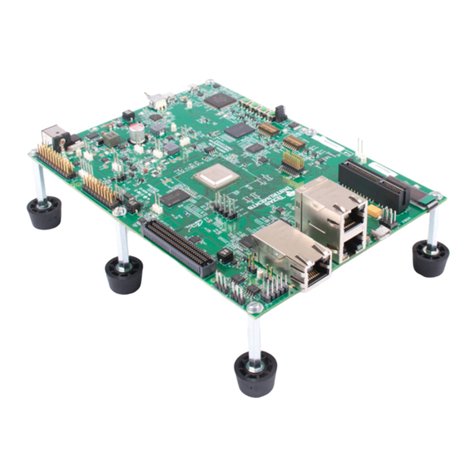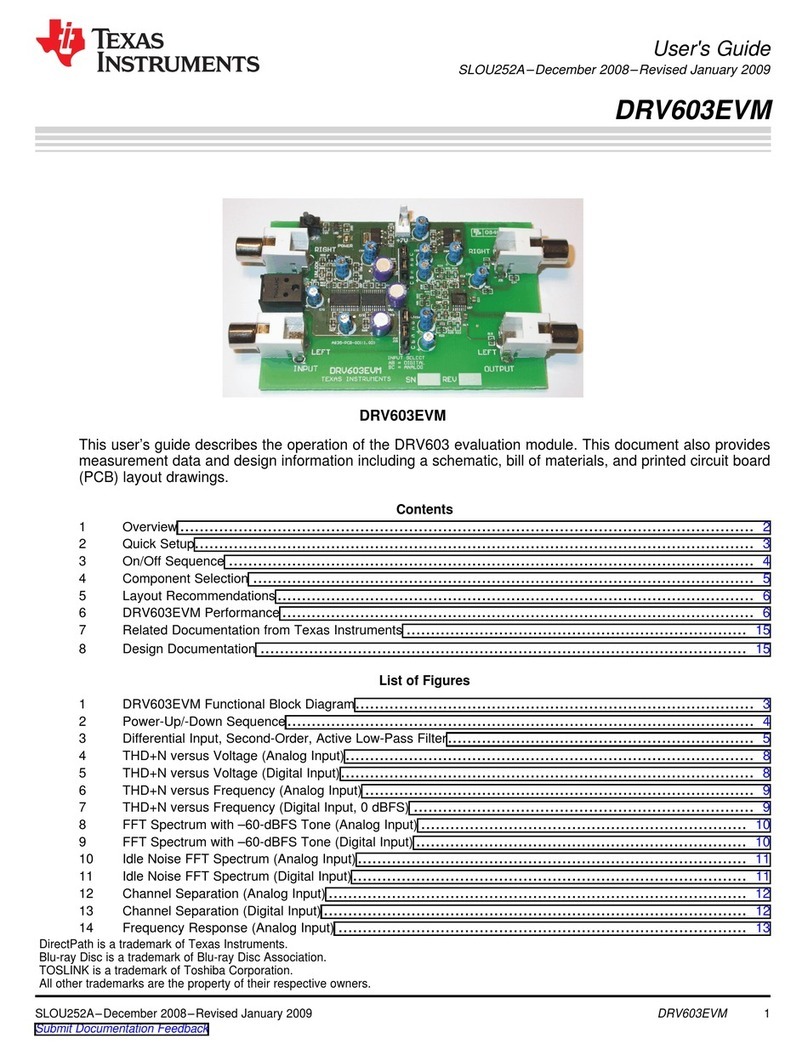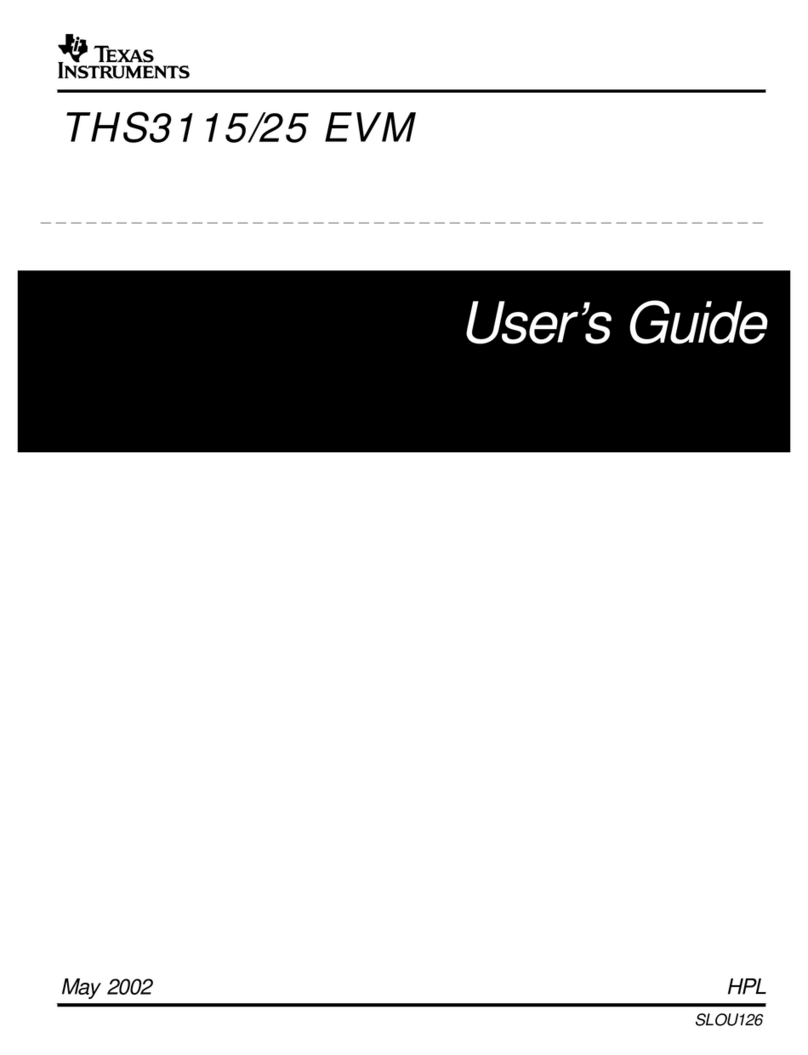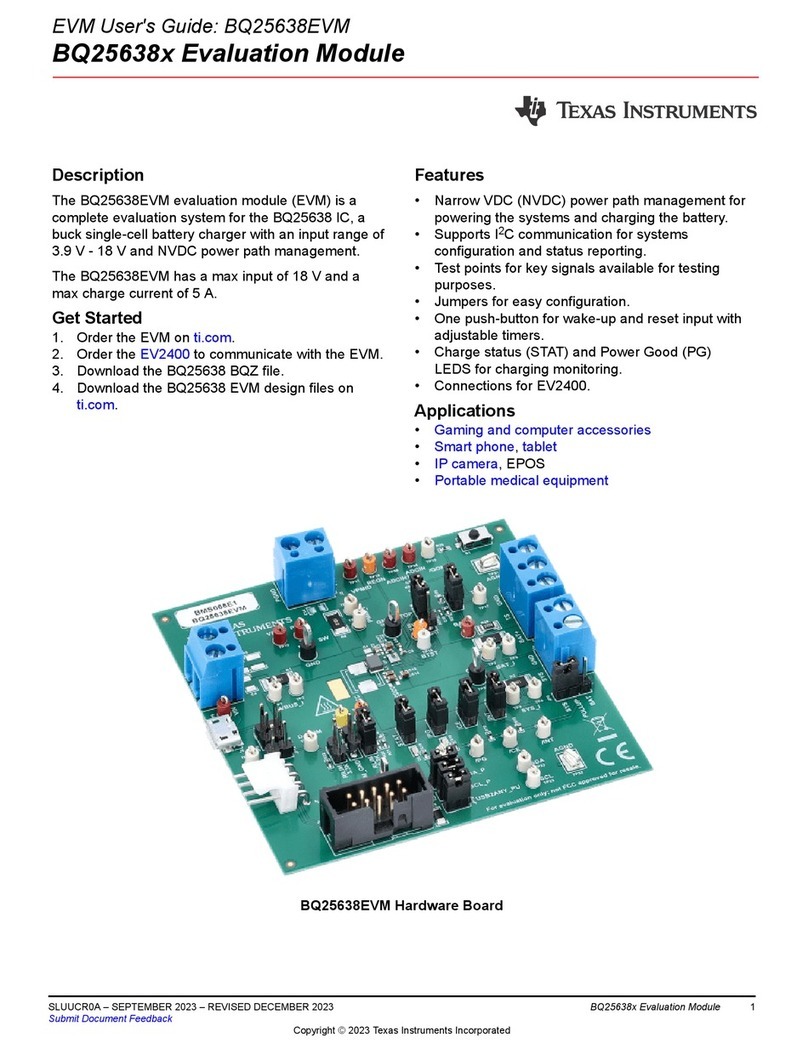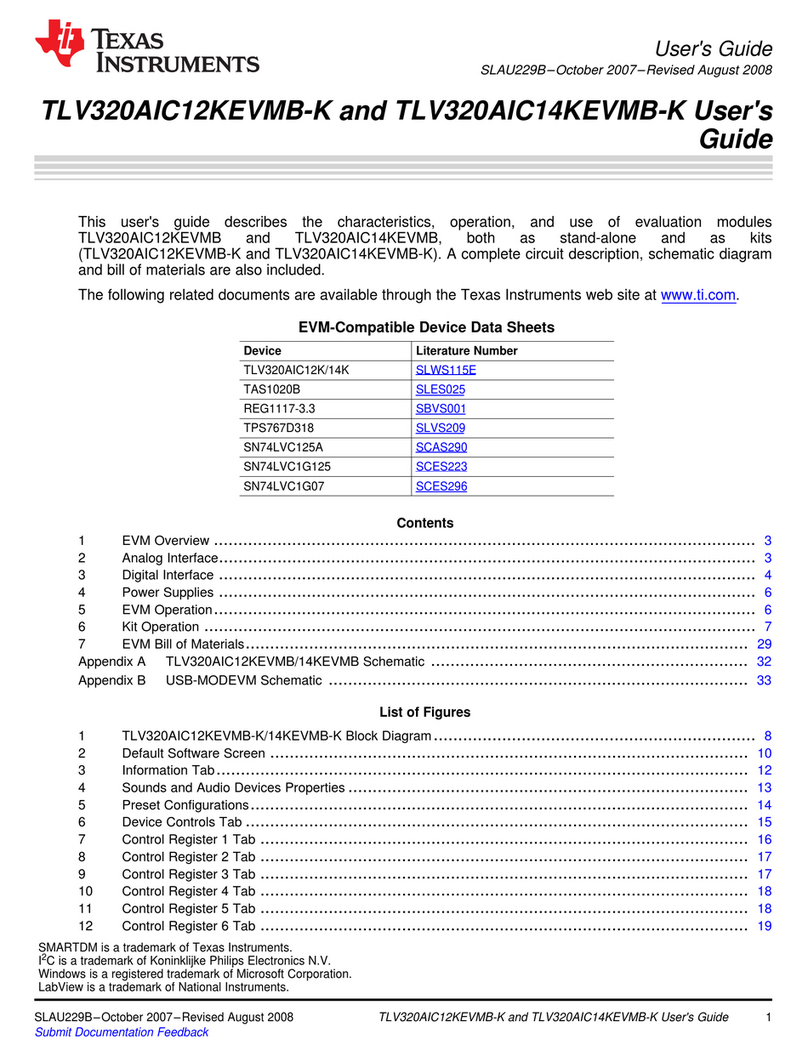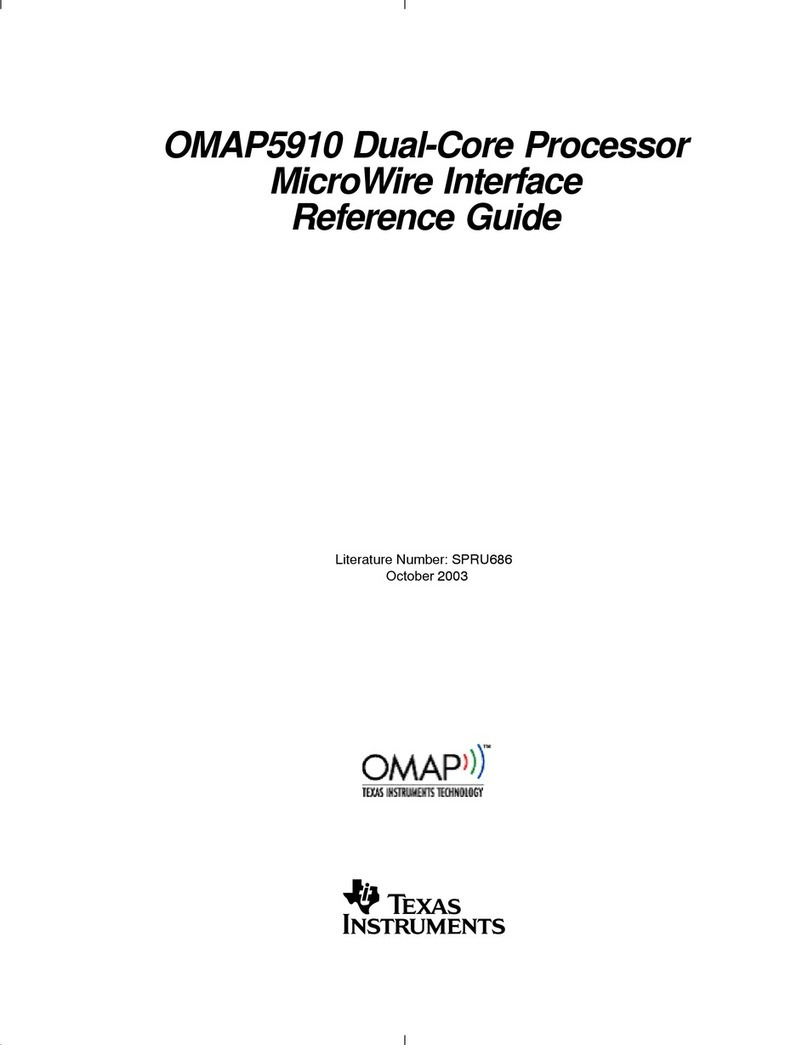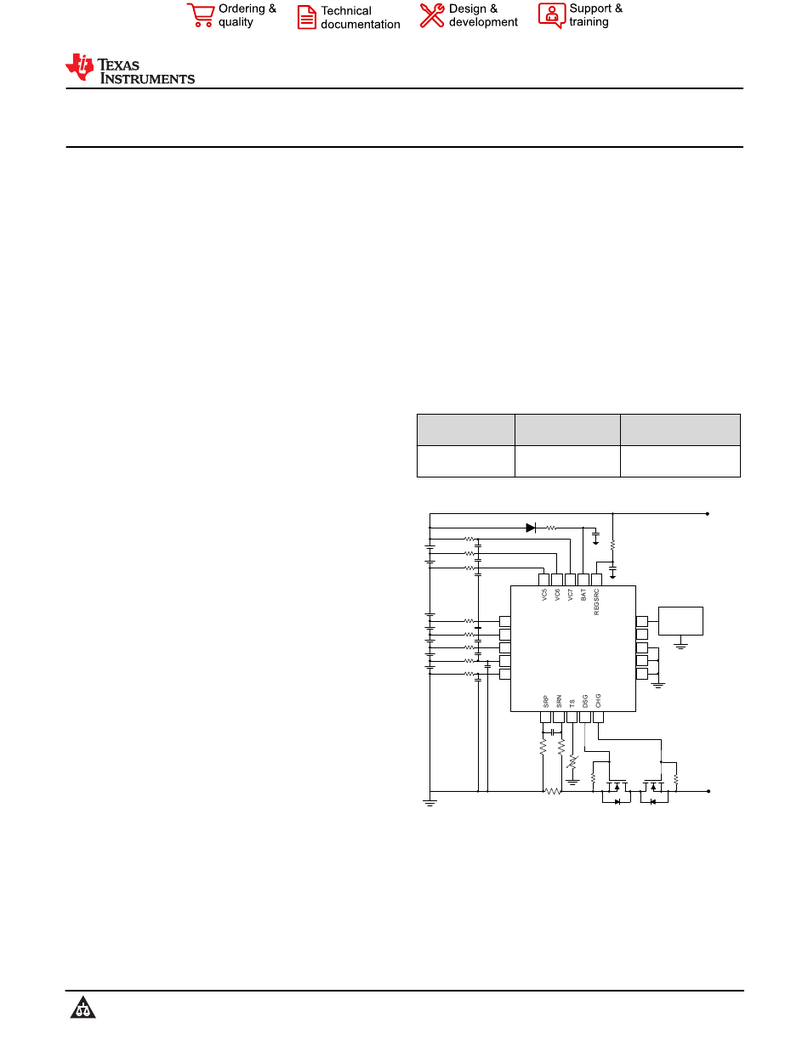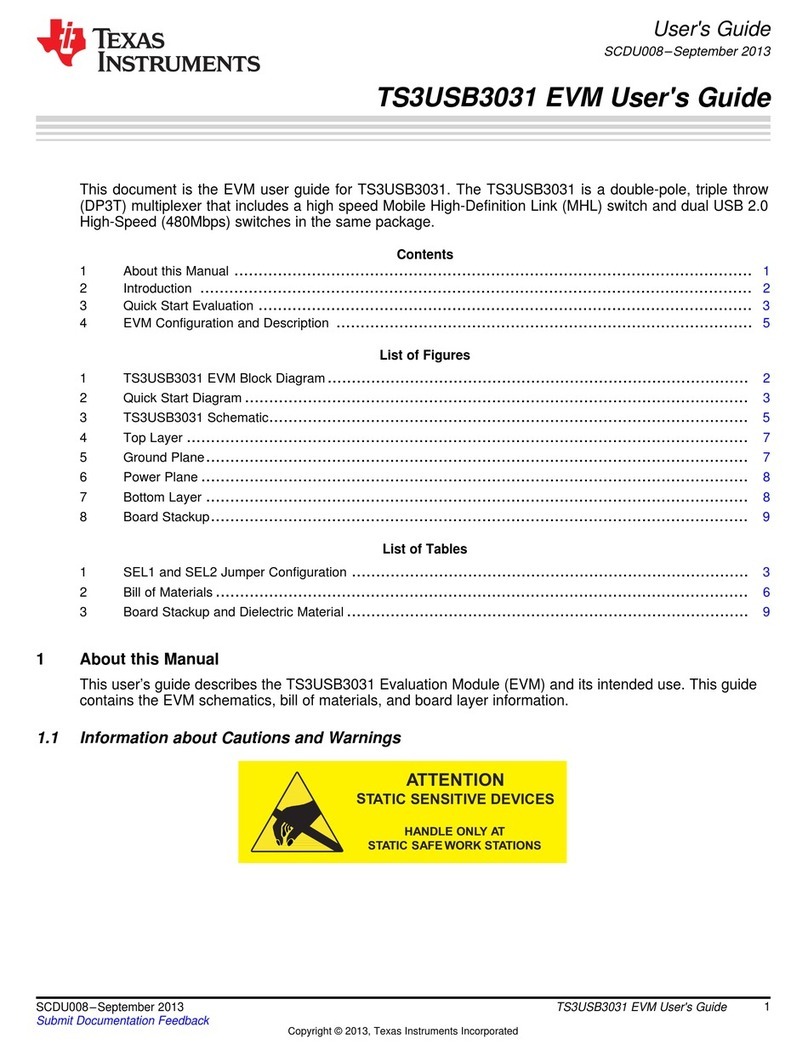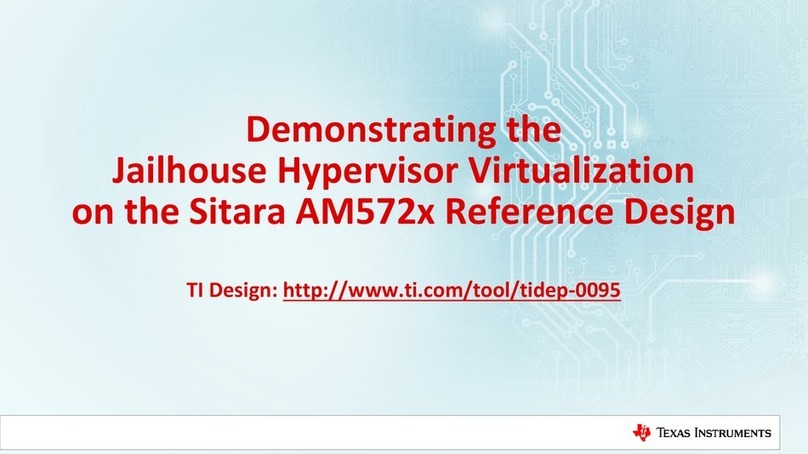
magnet-to-sensor distance depends on where the sensor is placed on the PCB as well as the dimensions of
the e-Meter case. For small-sized systems, the magnetic sensor can be placed near the center of the board
for symmetrical sensing coverage across the meter case, or the sensor can be placed near any components
that are affected by magnetic tampering. For large-sized systems like certain polyphase meters, sometimes
it is not possible for one magnetic sensor to sense tampering across the entire meter surface, so multiple
3D Hall sensors can be used and placed spread out with respect to each other on the PCB to cover a large
sensing area. The TMAG5273 has four sets of device orderables that are factory programmed with different
I2C addresses, which enable multiple devices to share the same I2C bus.
•Ability to change between multiple device power modes: The TMAG5273 supports switching between
multiple power modes, depending on if it is desired to reduce system current consumption. The TMAG5273
has an active mode for taking measurements, a sleep mode for minimizing current consumption, and a
duty-cycle mode that automatically switches between active and sleep modes. Typical use-cases of the
different power modes for electricity meters are described below:
– Active mode is used for taking measurements and requires the most power out of the different power
modes. An example scenario where active mode is typically used is when the Mains are available and the
meter is running off the AC/DC power supply. When running off the AC/DC power supply, the relatively
high active mode current consumption (2.3 mA) of the TMAG5273 is negligible.
– In duty cycle mode, the device takes measurements and then automatically goes to sleep for a user-
specified amount of time. Duty-cycle mode is good for minimizing current consumption while still detecting
magnetic tampering, such as when low-speed magnetic tamper detection is necessary when running off
a backup battery. To reduce average current consumption in duty cycle mode, select a long sleep time.
When selecting the sleep time, set the sleep time to be less than the desired response time for magnetic
measurements. As an example, to sense magnetic tampering every 2 ms using wakeup and sleep mode,
set the sleep time to 1 ms instead of 1 second.
– In sleep mode, the device does not take any magnetic measurements. An alternative to wakeup and sleep
mode is to have the MCU manually set the sensor to sleep mode and then manually set the sensor to
wake up after the desired sleep time has passed. This requires more overhead from the MCU; however,
this option can reduce the system current consumption if the MCU is going to have its own wakeup and
sleep mode that allows the MCU to reconfigure the TMAG5273 during each wakeup and sleep mode
cycle. For systems that do not require detecting magnetic tampering when running off a backup battery,
the TMA5273 can just be put in sleep mode to reduce system current consumption when running off a
battery and then put back in active mode when the system is able to run off the AC/DC power supply
again.
•GPIO pin interrupts when magnetic tampering detected (depends on device): The TMAG5273 has
the ability to set an interrupt pin when the sensed magnetic flux density of any axis goes beyond a user-
defined magnetic switching threshold. To detect tampering, the user can set the magnetic switching point
for interrupts to the desired magnetic tampering threshold. Since the interrupt pin of the Hall-effect sensor
can wake up the microcontroller when the MCU is in low-power mode, and since the microcontroller does
not have to read the Hall-effect sensor to determine magnetic tampering, the MCU can go to low-power
mode when running off a backup power supply until woken up by the interrupt pin of the Hall-effect sensor.
Used simultaneously, the general-purpose input/output (GPIO) pin interrupt feature and duty-cycle power
mode can reduce system current consumption and extend the lifetime of the backup power supply. Once the
GPIO pin of the Hall-effect sensor wakes up the microcontroller, the MCU can then retrieve the value of the
sensed magnetic field reading that caused the interrupt and then enable wakeup and sleep mode with GPIO
interrupts again.
•Detection of AC magnets: AC magnets do not only affect current transformers. AC magnets can also affect
shunt and Rogowski coil current sensors. To detect AC magnets, a linear 3D Hall sensor can also be used.
Detecting AC magnets requires a fast-enough effective sampling period and a small enough sleep time to
properly capture enough samples along a cycle of the AC magnet waveform, as Figure 2-2 shows. The
effective sampling period corresponds to the time needed to get one set of samples, which is dependent on
the internal sampling rate of the device. Since linear Hall sensors provide information on the actual sensed
magnetic flux densities, the sensors are better able to detect AC magnets than a low-sample rate Hall switch.
www.ti.com System Overview
TIDUF25 – JUNE 2023
Submit Document Feedback
Cost-Effective, 3-Phase CT Electricity Meter Reference Design Using
Standalone ADC
7
Copyright © 2023 Texas Instruments Incorporated
